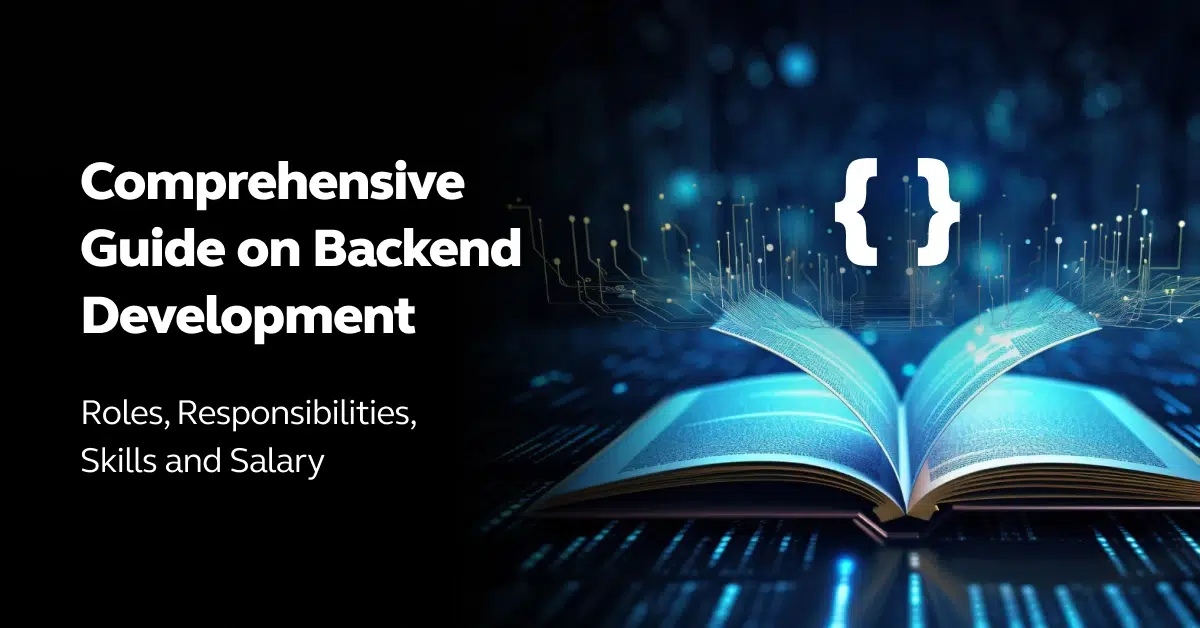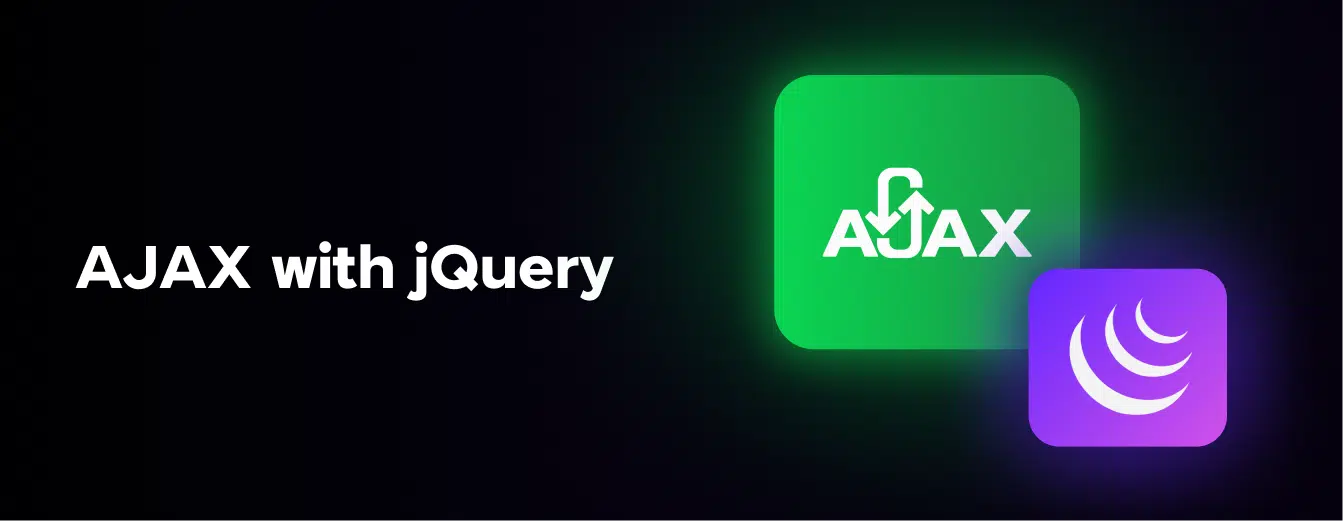
Top 15 Technologies to Learn for a Java Backend Developer
Jul 02, 2024 6 Min Read 4616 Views
(Last Updated)
Learning Java syntax alone isn’t sufficient in today’s dynamic software development landscape. Backend developers need to learn various tools and frameworks to excel.
In this blog, we’ll explore top technologies for Java backend developers, from foundational frameworks like Spring to cutting-edge tools like Docker and Kubernetes. By exploring each technology’s significance, we’ll help you master backend development with finesse and adaptability. Let’s get started!
Table of contents
- What is Backend Development?
- Top 15 Technologies to Learn for a Java Backend Developer
- Spring Framework and Spring Boot: Essential Frameworks for Modern Java Development
- Microservices Architecture: To Design Scalable and Flexible Systems
- Containerization Technologies: To Streamline Deployment and Scaling
- Cloud Services: To Use the Power of the Cloud
- RESTful Services and APIs: To Build Interoperable Web Services
- Database Technologies: To Manage Data Effectively
- Messaging Systems: To Facilitate Asynchronous Communication
- Security: To Safeguard Applications
- Search Engines: To Enhance Data Retrieval
- Performance Monitoring and Optimization: To Ensure Application Efficiency
- CI/CD Tools: To Automate Build and Deployment
- Unit Testing and Integration Testing: To Ensure Code Quality
- Reactive Programming: To Manage Asynchronous Data Streams
- WebSockets and Real-Time Communication: To Enable Live Interactions
- API Documentation: To Improve Usability and Maintenance
- Conclusion
- FAQs
- Why should Java backend developers learn Spring Framework and Spring Boot?
- What is the significance of Docker and Kubernetes in Java backend development?
- How does AWS (Amazon Web Services) complement Java backend development?
What is Backend Development?
Backend development refers to the aspect of software engineering that focuses on the server-side logic and operations of an application. In a typical web or mobile application, the backend is responsible for processing data, executing business logic, and interacting with databases, external services, and other components of the application infrastructure.
Backend developers write code that runs on the server, handling requests from the client side (front end) of the application.
Know More About Backend Development: Roles, Responsibilities, Skills, and Salary – A Complete Guide[2024]
Key responsibilities of backend developers include:
- Data Management: Storing and retrieving data from databases, including creating, updating, and deleting records.
- Business Logic: Implementing the core logic of the application, such as algorithms, calculations, and workflows.
- Security: Implementing authentication, authorization, and data encryption to ensure the security of the application and its users’ data.
- Integration: Integrating with external services, APIs, and third-party systems to access additional functionality or data.
- Performance Optimization: Optimizing the performance and scalability of the application, including minimizing response times and reducing server load.
- API Development: Creating APIs (Application Programming Interfaces) to allow communication between the frontend and backend components of the application, as well as with external services.
Backend development is often done using server-side programming languages such as Java, Python, Ruby, Node.js, and PHP, along with frameworks and tools that provide additional functionality and streamline development processes.
Overall, backend development plays an important role in building the server-side components that power modern web and mobile applications. To learn backend development and master the server-side programming languages, consider elevating your skills with GUVI’s Full Stack Development Course. This tailored program offers in-depth training, along with the latest frameworks and tools, setting you on the path to becoming a proficient developer.
Also Read: 40 Java Interview Questions for Freshers with Clear & Concise Answers
Having explored the fundamentals of backend development, let’s explore the top 15 must-know technologies for Java backend developers, setting the stage for professional growth and innovation.
Top 15 Technologies to Learn for a Java Backend Developer
For a Java backend developer, mastering the following technologies can certainly enhance your skills and make you highly proficient in building robust and scalable applications. Here’s a breakdown of each technology:
1. Spring Framework and Spring Boot: Essential Frameworks for Modern Java Development
Spring Framework is important for enterprise Java application development, providing a comprehensive programming and configuration model. Spring Boot, an extension of Spring, simplifies application setup with its convention-over-configuration approach, allowing developers to focus on functionality rather than boilerplate code.

It offers embedded servers, auto-configuration, and extensive starter kits, making it easier to create stand-alone, production-grade applications quickly. Learning Spring and Spring Boot is important for Java developers to build robust, efficient backend systems. These frameworks support a wide range of application needs, from simple web applications to complex, high-performance microservices ecosystems.

Mastery of Spring can significantly enhance a developer’s productivity and open up numerous opportunities in the Java ecosystem.
Also Explore: Top 7 Java Libraries for Machine Learning

2. Microservices Architecture: To Design Scalable and Flexible Systems
Microservices architecture breaks down applications into smaller, loosely coupled services, each responsible for a specific function. This approach offers enhanced scalability, flexibility, and faster deployment times compared to traditional monolithic architectures. For Java backend developers, understanding microservices involves learning design principles, inter-service communication, and decentralized data management.

Technologies like Spring Cloud and Netflix OSS facilitate the development of microservices by providing patterns for service discovery, configuration management, and resilient communication. Embracing microservices architecture allows developers to build systems that are easier to scale, maintain, and update, meeting the dynamic demands of modern business environments.
Must Read: A Comprehensive Guide to Microservices Architecture and Implementation [2024]

3. Containerization Technologies: To Streamline Deployment and Scaling
Containerization, with Docker leading the way, packages applications with their dependencies into containers, ensuring consistency across environments from development to production. Kubernetes, an orchestration platform, manages these containers, automating deployment, scaling, and operations. For Java backend developers, mastering containerization and orchestration is important for developing microservices-based applications and achieving high availability and scalability.

Learning Docker and Kubernetes equips developers with the skills to containerize applications efficiently and manage complex systems with ease. These technologies are foundational in modern cloud-native development, supporting agile practices and continuous delivery.
Also Read: List of Top 30 AWS Services

4. Cloud Services: To Use the Power of the Cloud
Cloud computing platforms like AWS, Azure, and Google Cloud Platform provide a vast array of services that can host, scale, and manage applications. For Java backend developers, understanding cloud services is essential for using the cloud’s flexibility, scalability, and cost-efficiency. Learning to deploy Java applications on these platforms involves understanding cloud-specific services, such as compute instances, storage options, and managed databases, as well as cloud-native technologies like serverless computing and auto-scaling.

Familiarity with cloud services enables developers to build resilient, scalable applications that can adapt to changing loads and reduce operational costs.
Must Find Out 7 Tips To Learn Cloud Computing Engineering in the Best Possible Way

5. RESTful Services and APIs: To Build Interoperable Web Services
RESTful services and APIs are the backbone of modern web and mobile applications, enabling different systems to communicate and share data over the Internet. For Java backend developers, creating effective RESTful services involves understanding HTTP protocols, resource naming, statelessness, and content negotiation.
Tools and frameworks like Spring MVC help in building RESTful APIs that are scalable and maintainable. Learning to secure APIs with authentication and authorization mechanisms like OAuth and JWT is also important. Mastery of RESTful API development is essential for developers to enable seamless integration and interaction between different parts of an application and third-party services.
Also Read: Use ReactJS to Fetch and Display Data from API – 5 Simple Steps

6. Database Technologies: To Manage Data Effectively
Database management is a core skill for Java backend developers. While traditional relational databases like MySQL and PostgreSQL are widely used, the growing diversity of application needs has led to the rise of NoSQL databases such as MongoDB, Cassandra, and Redis. Each database type offers distinct advantages in terms of structure, scalability, and performance.

Learning different database technologies allows developers to choose the right database that best fits the application’s requirements. Understanding how to interact with databases using Java, through JDBC or ORM frameworks like Hibernate, is also important for efficient data management and manipulation.
Must Explore: 10 Best Database Management Systems For Software Developers

7. Messaging Systems: To Facilitate Asynchronous Communication
Messaging systems like Apache Kafka and RabbitMQ enable asynchronous communication between different parts of an application, improving performance and scalability. For Java backend developers, understanding messaging and event-driven architectures is important for building systems that can handle high throughput and are resilient to failures.
Learning how to implement message queues, publish-subscribe models, and event streams allows developers to decouple service dependencies, enhancing system reliability and scalability. These technologies are essential in microservices architectures, where services must communicate effectively without direct dependencies.
Also Read: 10 BEST Java IDE for Java Programming Language

8. Security: To Safeguard Applications
Security is a paramount concern in application development. Java backend developers must understand secure coding practices, authentication, authorization, and common security vulnerabilities. Spring Security and OAuth 2.0 are widely used frameworks and protocols for securing Java applications. Learning these technologies helps developers protect sensitive data, prevent unauthorized access, and ensure their applications are safe from attacks.
Understanding JWT for secure token-based authentication and incorporating encryption, secure API access, and data validation is important for building trust and integrity in applications.
Also Read: OOPs Concepts in Java – 4 Basic Concepts
9. Search Engines: To Enhance Data Retrieval
Search engines like Elasticsearch and Solr are powerful tools for adding search functionality to applications and handling large volumes of data with speed and accuracy. For Java backend developers, integrating search engines involves understanding indexing, querying, and data analysis. These technologies not only provide fast data retrieval but also support complex search operations, real-time analytics, and data visualization.
Learning to implement and optimize search engines within Java applications enhances user experience and application performance, enabling more intuitive and efficient data interactions.
Read: Top 10 Java Programs For Freshers | Start Coding With A Flair!

10. Performance Monitoring and Optimization: To Ensure Application Efficiency
Performance monitoring and optimization are important for maintaining and improving the efficiency of Java applications. Tools like Prometheus, Grafana, and the ELK Stack provide insights into application performance, helping developers identify and troubleshoot bottlenecks. Understanding how to implement monitoring solutions and analyze performance metrics enables Java backend developers to optimize application speed, reliability, and resource usage.
Learning these technologies is essential for proactive performance management, ensuring applications meet user expectations and operate cost-effectively.
11. CI/CD Tools: To Automate Build and Deployment
Continuous Integration and Continuous Deployment (CI/CD) tools like Jenkins, GitLab CI/CD, and GitHub Actions automate the software development lifecycle, from code integration to deployment. For Java backend developers, mastering CI/CD practices and tools is important for improving code quality, accelerating release cycles, and enhancing collaboration.
Learning to set up CI/CD pipelines enables developers to automate testing, build processes, and deployment, reducing manual errors and ensuring consistent application updates. These practices support agile development methodologies, facilitating rapid and reliable software delivery.
Know More: Continuous Integration vs Continuous Deployment in DevOps (A Comprehensive Guide)

12. Unit Testing and Integration Testing: To Ensure Code Quality
Unit testing and integration testing are fundamental practices for ensuring the quality and reliability of Java applications. Frameworks like JUnit, Mockito, and TestNG enable Java backend developers to write and execute tests that validate individual components and their interactions. Learning these testing frameworks and adopting Test-Driven Development (TDD) practices help developers identify and fix issues early, improve code quality, and facilitate maintainable codebases.

Effective testing strategies are essential for building robust applications and supporting continuous integration and deployment workflows.

13. Reactive Programming: To Manage Asynchronous Data Streams
Reactive programming is a paradigm that deals with asynchronous data streams and the propagation of change, making it well-suited for applications with dynamic, real-time data flows. For Java backend developers, understanding reactive programming involves learning frameworks like Project Reactor, which Spring WebFlux uses for building non-blocking, reactive applications.
Mastering reactive programming enables developers to handle complex data interactions and concurrency with ease, leading to more responsive and scalable applications. This approach is particularly beneficial in microservices architectures and applications requiring real-time data processing.
Find Out The Most Popular Java Tools for Every Phase of Development
14. WebSockets and Real-Time Communication: To Enable Live Interactions
WebSockets provide a full-duplex communication channel over a single, long-lived connection, making them ideal for real-time web applications like chat systems and live updates. Java backend developers need to understand how to implement WebSockets to facilitate live, bidirectional communication between the client and server.
Learning to use WebSockets alongside traditional HTTP communications allows developers to enhance the interactivity and responsiveness of applications, providing users with immediate feedback and engaging experiences.
15. API Documentation: To Improve Usability and Maintenance
API documentation is important for the usability and maintenance of web services. Tools like Swagger (OpenAPI) help Java backend developers create, manage, and share API documentation. Learning to document APIs effectively enables developers to communicate the functionalities, parameters, and return types of API endpoints clearly, making it easier for other developers to integrate and work with the APIs.
Well-documented APIs are essential for fostering collaboration, ensuring consistency, and facilitating the adoption of services within and across development teams.
Also Read: Data Types in JAVA: Primitive VS Non-Primitive Data Types
Mastering these technologies will equip you to develop robust, scalable, and maintainable backend systems using Java. Keep in mind that technology evolves, so staying updated with emerging trends and technologies is also essential.
Also Read: Top 100 Core Java Interview Questions and Answers 2024
Conclusion
By mastering the technologies outlined in this blog and staying updated with the emerging trends, developers can position themselves as versatile, in-demand professionals capable of tackling complex challenges and driving innovation in the ever-evolving backend development. Let’s start this journey of continuous learning and growth together.
Must Read: Top 7 Back-End Developer Skills You Should Know
FAQs
Why should Java backend developers learn Spring Framework and Spring Boot?
Spring Framework and Spring Boot are widely used in Java backend development due to their extensive features, robustness, and ease of use.
Developers often ask about the benefits of these frameworks, such as simplified configuration, dependency injection, and support for building microservices and RESTful APIs.
What is the significance of Docker and Kubernetes in Java backend development?
Docker and Kubernetes have revolutionized the way applications are deployed and managed, especially in cloud-native environments. Java backend developers frequently inquire about how these containerization and orchestration technologies streamline the deployment process, enhance scalability, and facilitate microservices architecture.
How does AWS (Amazon Web Services) complement Java backend development?
AWS offers a comprehensive suite of cloud services that seamlessly integrate with Java applications, providing scalable infrastructure, managed databases, and various deployment options.
Developers often seek guidance on using AWS services like EC2, RDS, Lambda, and S3 to optimize performance, reduce operational overhead, and enhance the resilience of Java backend applications.
































Did you enjoy this article?